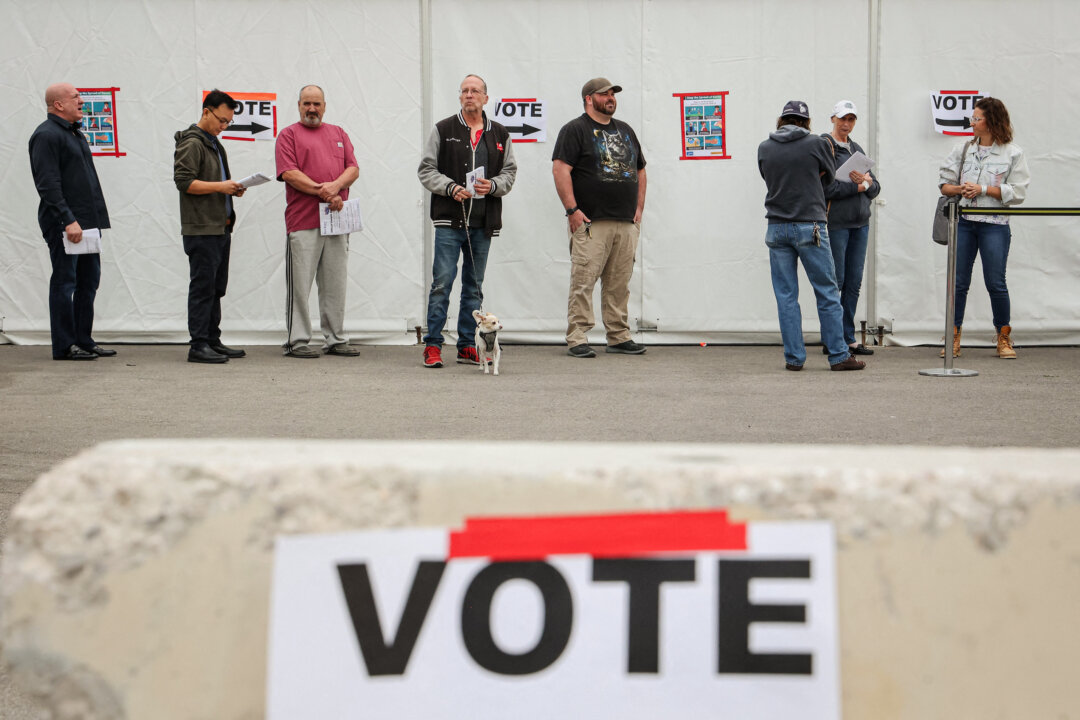Registered Republicans have a 5.4-percent advantage over registered Democrats in the early-voting total.
Republicans in Nevada have taken an early voting lead of more than 5 percentage points with just a week to go before the Nov. 5 contest, data show.
As of Tuesday afternoon, registered Republicans have a 5.4-percent advantage over registered Democrats in the early-voting total, according to figures posted by the University of Florida’s Election Lab.
Registered Republican voters have cast 283,337 ballots so far, taking a 38,330-vote lead over Democratic voters, who have cast 245,007 ballots so far, the data show. Unaffiliated voters, which make up about 25.3 percent of the current total, have cast 179,305 early votes.
While Democrats have a small lead in the mail-in ballot count, Republicans have a more than 75,000-vote lead for in-person early voting.
The state has close to 2 million active registered voters, according to the Nevada Secretary of State’s office, which said Monday that more than 643,000 early, mail-in, and overseas ballots have been cast so far. Of the state’s figures, about 40 percent were Republicans, nearly 35 percent were Democrats, and about 25 percent were unaffiliated with either party.
“I know people want to keep comparing this year to 2020 or 2022, but at the risk of repeating myself: This is a unicorn year. We have never seen this,” Jon Ralston, the CEO and editor of the Nevada Independent publication and who has been covering politics for 30 years, said in an analysis of the state’s voting data on Monday.
Meanwhile, the “usually reliable Clark Dem firewall has all but evaporated,” he said, referring to Democrats in the state’s most populous Clark County. Home to Las Vegas, Clark County has been considered a Democratic stronghold in the state, but Republicans had a turnout advantage of 8 to 9 percentage points as of Monday evening.
In the polls, former President Donald Trump held a small advantage over Vice President Kamala Harris as of Tuesday, according to a RealClearPolitics aggregate of polling data. Early voting in the Silver State is scheduled to end on Friday, Nov. 1.
The 2020 election in Nevada was also close. That year, state election officials certified the race in favor of President Joe Biden over Trump by about 34,000 votes, or just over 2 percentage points.
Earlier this week, the Nevada Supreme Court ruled that mail-in ballots with missing or smudged postmarks can be counted for up to three days after the Nov. 5 election, rejecting arguments submitted by state and national Republicans.
With its six electoral votes, Nevada is one of seven swing states where the result of the presidential election is anticipated to be close. The others are Arizona, Georgia, Michigan, North Carolina, Pennsylvania, and Wisconsin.
Nevada is one of eight states with what is commonly called all-mail elections, and one of 19 states that allows for counting of postmarked ballots after Election Day.
Other than Nevada, more than 50 million Americans have cast early ballots so far, with in-person voting making up more than half of the total. Election Lab data show that 26 million have voted in-person, whereas some 23 million have cast mail-in ballots.
Nationwide, Democratic voters have a 3 percent lead over Republicans in the early vote totals, although that gap narrowed slightly in recent days. About 24.3 percent of unaffiliated voters have also cast ballots so far.
It’s unclear what this means for the election, however. The early vote data only reveals whether voters are registered with a party, not who they are voting for, and the early electorate can change from day to day as more people vote early.
The large increase in 2020 Democratic early voting was largely a reaction to the COVID-19 pandemic, skewing historic comparisons, and triggering a torrent of voting by mail.
This year, Trump and Republicans have reversed course on 2020 rhetoric and encouraged their supporters to vote early.
The Associated Press contributed to this report.

